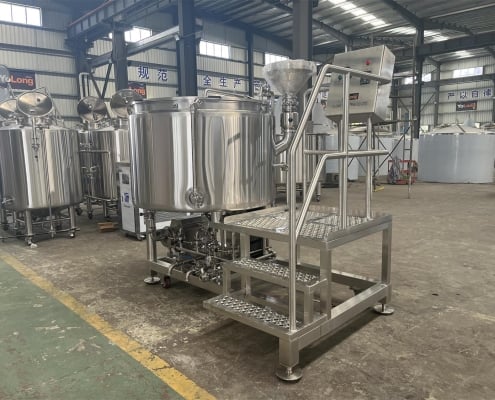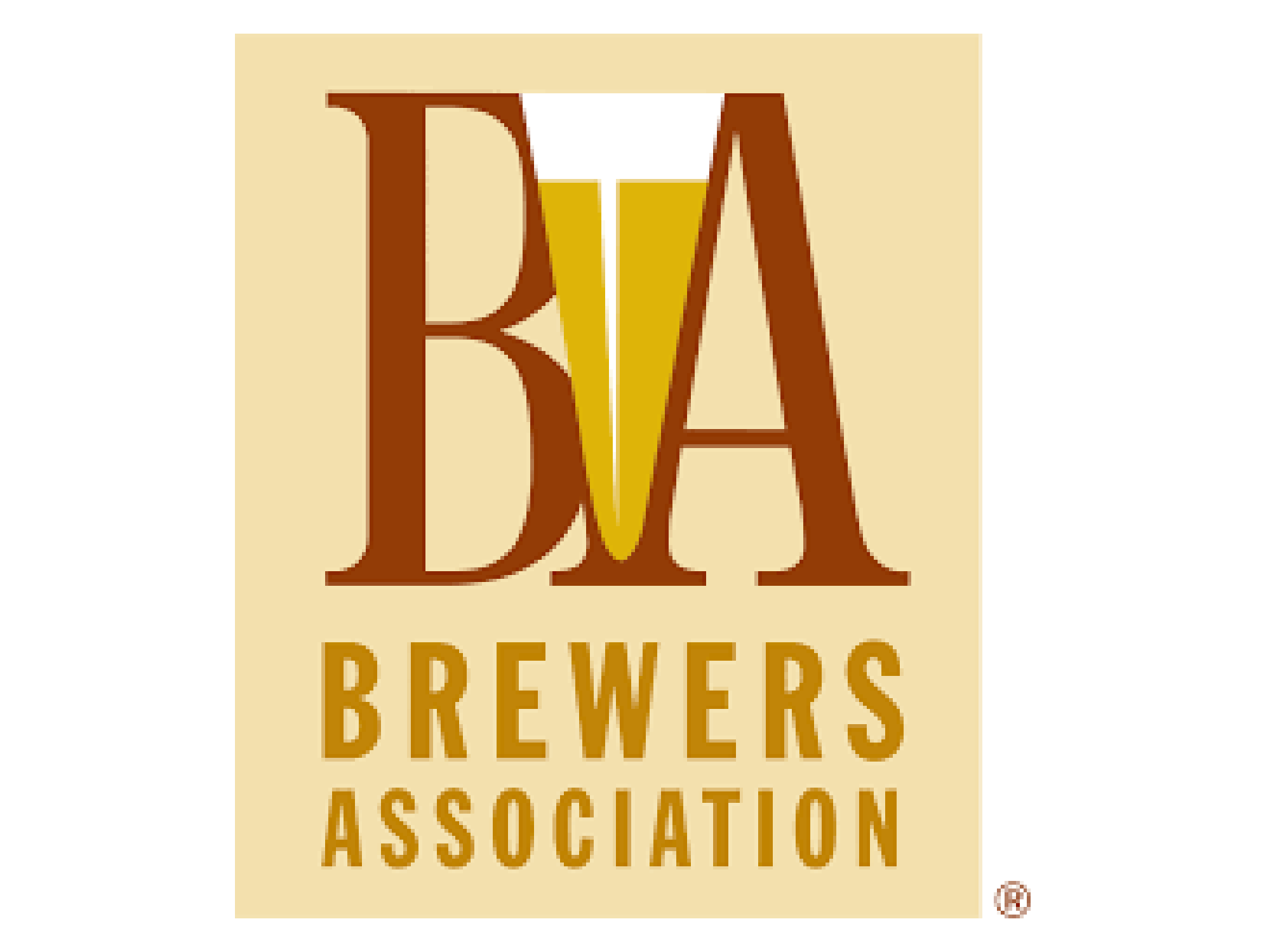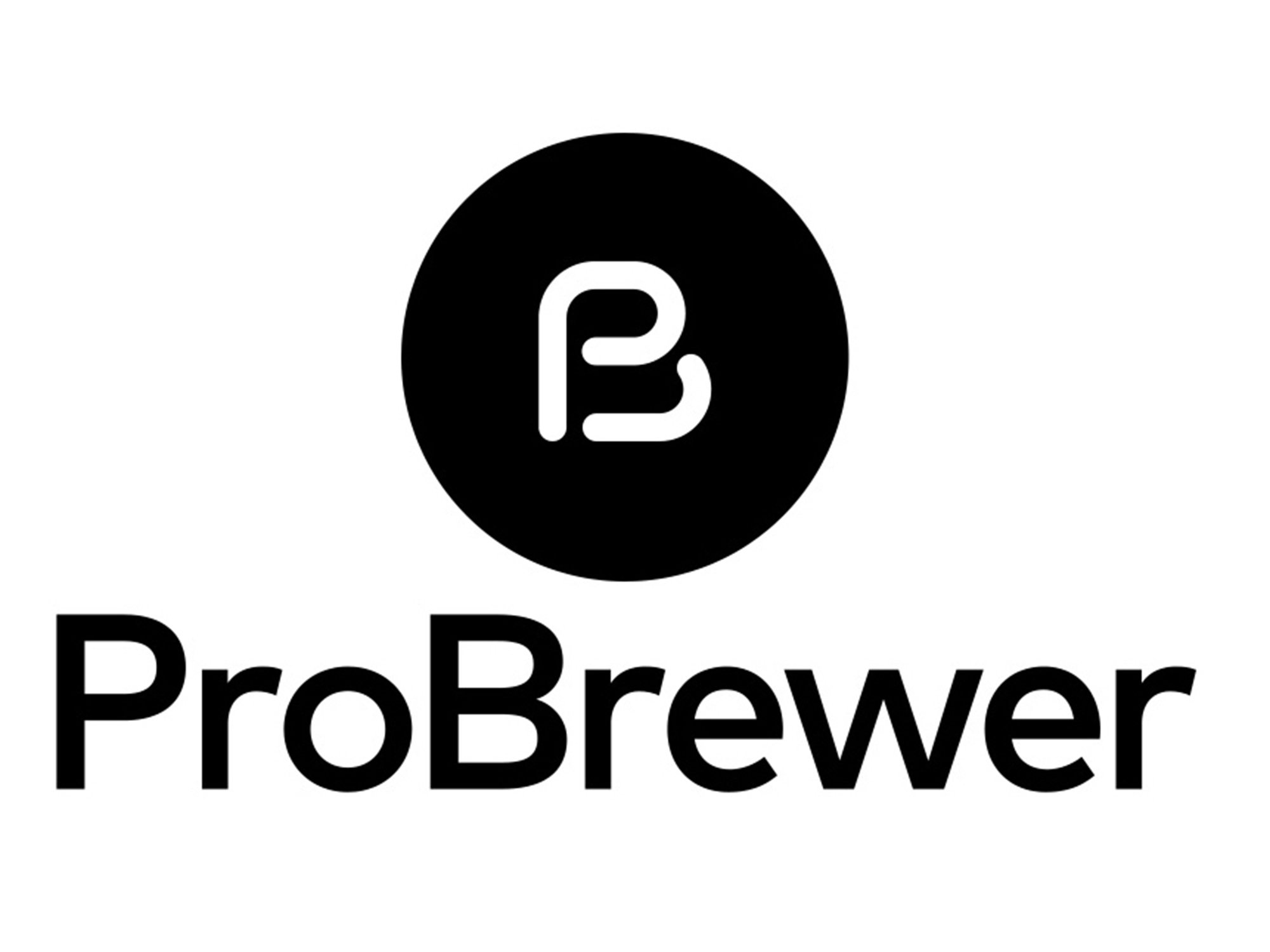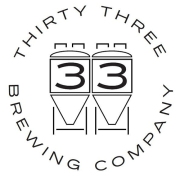Commercial Kombucha Brewing Equipment
YoLong Brewtech is a world class beer equipment production site, so it stands to reason that we also provide Kombucha Brewing Equipment!
At YoLong, we design, fabricate, and install kombucha brewing vessels and the cutting-edge kombucha fermenting equipment you need to startup or add to your kombucha brewing enterprise.
There’s no doubt that kombucha making equipment expertise is ingrained into the culture of our times. The ancient Chinese beverage tea of kombucha has grown to become one of the most popular drinks in the portfolios of big name beverage companies around the world. The market potential of a kombucha production facility cannot be overestimated.
How to setup your own kombucha brewing equipment
Did you know that setting up your own commercial kombucha brewery and launching into brewing kombucha requires only 3 key pieces of brewing equipment?
- 1 x Kombucha Brewery
- 1 x Kombucha Fermenter
- 1 x Kombucha Finishing Tank
Kombucha brewing equipment – all precisely designed and fabricated using a seamless combination of centuries-old kombucha brewing wisdom with innovative brewing technology.
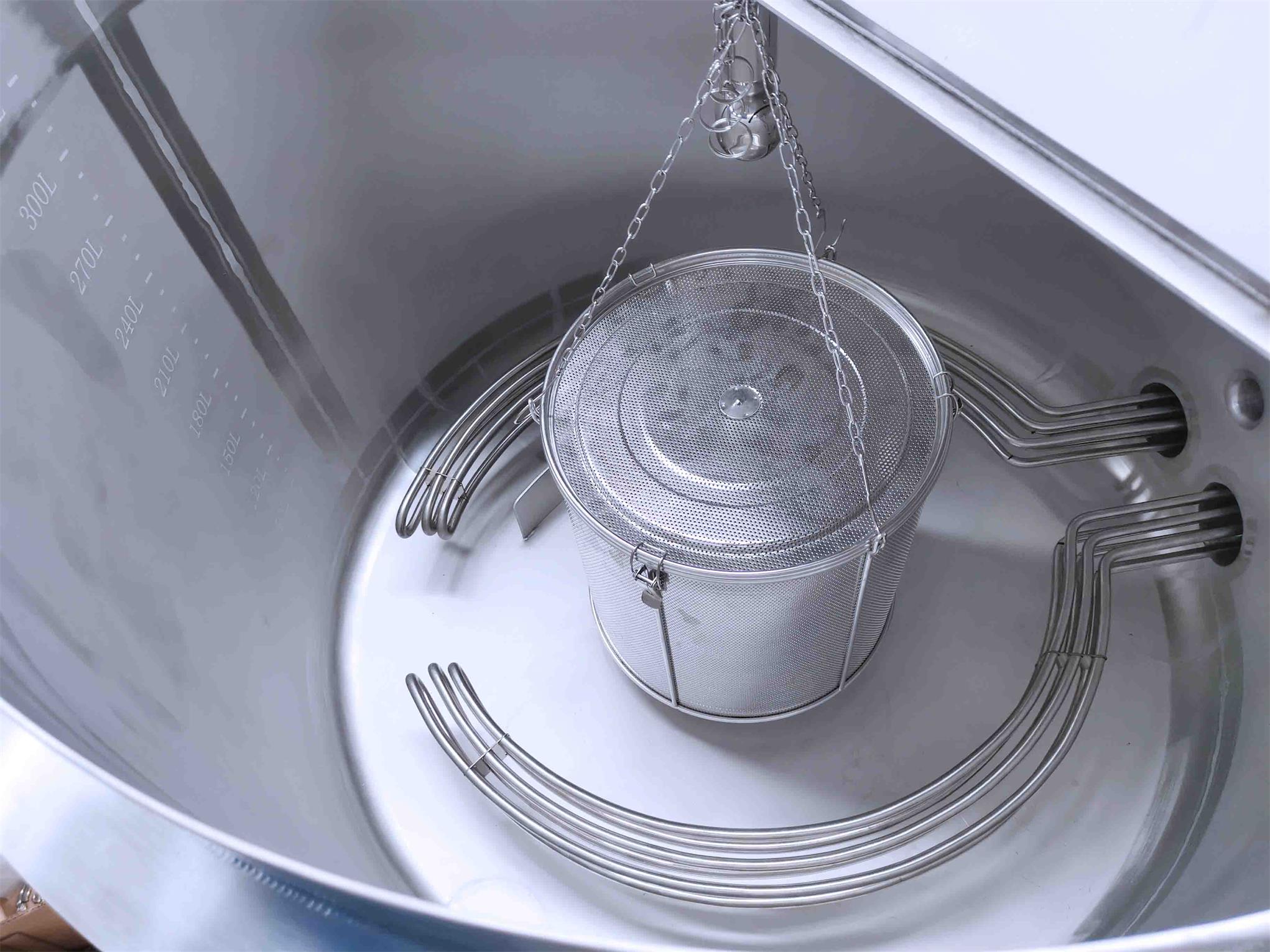
Stainless Steel Tea Bag
Essential YoLong Kombucha Production Equipment
Essential YoLong kombucha production equipment for small, medium, and large commercial kombucha production includes:
- Dedicated kombucha brewing skid
- Fermentation tank for the first brewing stage
- Pressure tank
- A filter for the kombucha
- An essential bottle filler and a washer
With these pieces in place, you can start kombucha production and add kombucha brewer to your list of achievements in no time.
Key kombucha machines for commercial production:

Kombucha brewing skid
- A kettle is a kombucha vessel used to heat the mix. If the kettle size you require is over 10bbl, we suggest steam is used to heat the contents of the kettle.
- Sugar-mixing station has a special hopper used to hold and connect the water supply to the mixing station; this enables the sugar to be pre-dissolved at the sugar mixing station.
- Water supplier stations can be set as manual or automatic to measure the amount of water flowing into the station.
- Sugar dissolving system is where the sugar circulates from the sugar station; it is driven by a rotation device to help the dissolution process.
- A tea cage is hung in the middle of the kettle. The tea cage height can be adjusted by the brewer. We can customize the tea cage levels to suit the client’s requirements.
- Platforms are for the brewer to use, and are accessed by a ladder; there is a safety fence included in the design.
- The plate heating exchanger is used for quick cooling, when the hot tea must acquire room temperature in optimal time. Home brewers use cold water to cool down kombucha brewed at home; commercial kombucha brewers use a heat exchanger to cool the brew. A cold water supply is used for this.
- Special electric heating elements are an essential part of the commercial kombucha equipment setup.
- Pump, pipes, valves, gauges, and sensors are also available to take your kombucha tea production to the next level. Pumps are needed to keep the whole system moving, aiding sugar dissolution, circulation, transfer, and CIP.
- A control system is required even though the kombucha brewing process is not complicated; a semi-automatic control system is the most suitable, with an auto-temperature control system for the kettle, pump VFD function, anti-dry protection for heating the kombucha, as well as a low level aram, an automatic water supply, and a measuring option.
Kombucha Fermentation Tank:
A commercial kombucha fermenter is where the tea brew is left to ferment for its primary fermentation. This lasts anywhere from 1 to 3 weeks as the SCOBY does its work creating the delicious kombucha flavor profile.
- Top Manway
- CIP Spray Ball
- Pressure Vacuum Relief Valve
- Sample Valve
- Thermowell for Temperature Sensor
- One Level Gauge
- Cooling Jacket Sections
- PU-Foam Insulation
- Vertical Orientation
- Material, 304 Stainless Steel
- Inside Finish, 2B
- Outside Finish, #4
- Picked and Passivated Surface and Seam
- Internal & Exterior Welds, Grounded and Polished to #4
Kombucha Brite Tank (also called a Finishing Tank):
The final vessel used to brew kombucha is called a brite tank /bright tank in the kombucha brewing business. This is where the second fermentation and carbonation takes place. Flavorings, such as fruit flavors or spice flavors, are also mixed in during the secondary fermentation stage.
- Bottling and packaging the finished kombucha beverage can be done straight from the brite/finishing tank.
If the next step in the evolution of your commercial brewery is kombucha, please contact YoLong today to ask any questions you may have or get a quote for our world class kombucha equipment.
How to choose the best kombucha brewing equipment?
To choose the best kombucha brewing equipment, consider the following factors:
- Brewing goals: Determine whether you’re brewing kombucha for personal consumption, sharing with friends and family, or starting a small business. This will help you decide on the scale and type of equipment you need.
- Budget: Establish a budget for your kombucha brewing equipment, keeping in mind that investing in quality equipment can save you time and effort in the long run.
- Brewing method: Decide between batch brewing and continuous brewing. Batch brewing requires you to brew a new batch every time, while continuous brewing allows you to add fresh tea and sugar to an ongoing fermentation. Continuous brewing systems may be more expensive, but they offer convenience and a consistent supply of kombucha.
- Fermentation vessel: Choose a fermentation vessel that is made from food-grade materials, such as glass, stainless steel, or ceramic. Avoid plastic or metal containers that can leach chemicals or react with the acidic kombucha. Make sure the vessel has a wide opening for easy cleaning and SCOBY removal, and an airtight lid to prevent contamination.
- Size: Consider the volume of kombucha you plan to brew and choose a fermentation vessel that can accommodate your needs. For home brewing, a 1-gallon (3.8-liter) jar is a common starting point.
- Temperature control: Kombucha fermentation requires a consistent temperature of around 68-78°F (20-26°C). If you live in a cooler climate or have trouble maintaining this temperature range, consider investing in a heating mat or temperature control system.
- Accessories: Gather essential brewing accessories such as a cloth cover or airlock for the fermentation vessel, a food-grade thermometer, a pH meter or test strips, and a long-handled spoon for stirring.
- SCOBY and starter liquid: Ensure you have a healthy SCOBY (Symbiotic Culture of Bacteria and Yeast) and starter liquid, either from a trusted friend, an online retailer, or a local kombucha brewing supply store.
- Customer reviews and support: Research customer reviews and ratings for the brewing equipment you are considering. Additionally, check if the manufacturer offers customer support, helpful resources, or educational materials to assist you in your brewing journey.
- Ease of use and maintenance: Opt for equipment that is easy to use, clean, and maintain, especially if you are new to kombucha brewing.
By considering these factors, you can choose the best kombucha brewing equipment that suits your needs and preferences.
Best Kombucha brewing equipment manufacturers in 2024
There are several well-known kombucha brewing equipment manufacturers that produce high-quality products for both home and commercial brewing. Some of the top manufacturers include:
- YoLong Brewtech has been facilitating the establishment and extension of breweries all over the world for over 15 years. Customer consider YoLong professional kombucha brewery equipment to be representative of our many years of industry experience and specialist knowledge in engineering the finest craft beer systems.
- Northern Brewer : Northern Brewer is a popular homebrew supply company that offers a variety of kombucha brewing equipment, such as glass jars, fermentation crocks, and airlocks.
- Fermentaholics: Fermentaholics is a one-stop-shop for kombucha brewing equipment and supplies, including SCOBYs, tea blends, and brewing vessels. They also offer educational resources and support for brewers.
- Mortier Pilon: Mortier Pilon specializes in stylish and functional fermentation equipment, including kombucha brewing jars, crocks, and accessories.
- The Kombucha Shop: The Kombucha Shop offers a variety of kombucha brewing kits, supplies, and accessories. Their products are designed to make the brewing process simple and enjoyable for beginners and experienced brewers alike.
- EverBru Kombucha: EverBru Kombucha is a manufacturer that focuses on kombucha brewing systems for home and commercial use. Their products are designed to streamline the brewing process and ensure consistent results.
These manufacturers provide a range of equipment and resources for kombucha brewing, whether you’re just starting out or looking to scale up your operation. Always research each company and its products to find the best fit for your needs.
Why choose YoLong to supply commercial kombucha equipment?
Free design, consultation
YoLong Brewtech has been facilitating the establishment and extension of breweries all over the world for over 15 years. We consider YoLong professional kombucha brewery equipment to be representative of our many years of industry experience and specialist knowledge in engineering the finest craft beer systems.
We are proud to introduce YoLong Kombucha Brewery products to a wider audience.
The Culmination of Years of Design and Engineering
A YoLong Kombucha Brewery setup is state of the art. For over 15 years, YoLong has fabricated beautifully engineered brewhouses, fermenters, and finishing (brite) tanks that have gone on to become the industry standard. Our equipment and accessories have inspired some winning beer recipes in breweries near and far. It is enough to say that the YoLong Kombucha Brewery has a pretty impressive pedigree. The best thing is, it also comes with our promise of outstanding customer and after sales service, and superb engineering performance.
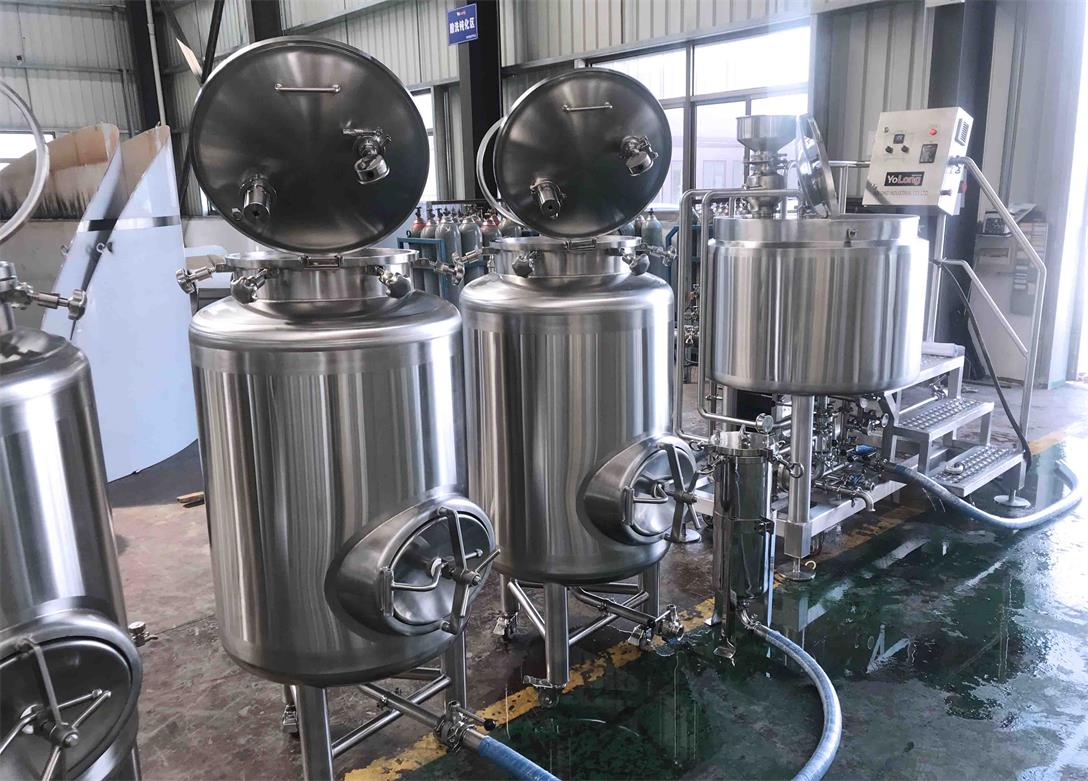
kombucha system design
YoLong Kombucha Brewery Features:
- Energy efficient
- Easy to operate
- Minimal maintenance required – even over extended period
- Accessible deck platform height with ergonomic surface
- Easy installation on skids
- Adapts to expansion with modular components
- 1 or 2 vessel systems available
- Choice of production capacities (according to size of premises)
- Agitation mixer optional
International Quality Assurance
When you choose a kombucha brewery setup from YoLong, you are quality-assured of the highest international standards of equipment safety and sanitation. Our kombucha-making equipment is guaranteed to be efficient, consistent, and capable of replicating and repeating the production process with precision and reliability every time.
Safety: Placing the safety brewers and their workers is at the forefront of every design and manufacturing procedure at YoLong. You can relax knowing your kombucha equipment has had proven and functional safety features integrated into each stage and component, including:
- CIP facilities
- Transfer and pump systems
- Internationally accepted standard emergency shut-down systems and componentry
Sanitation: Food and beverage preparation sanitation and safety is critical to a kombucha brewery setup. YoLong has mastered the art of engineering sanitary vessels, brewery systems, and CIP (Clean in Place) technology. Not only can the CIP prepare the brewery equipment for the next batch, but the vessels themselves have finely polished interiors which prohibits the growth or build-up of any substances. CIP is efficient, foolproof, and thorough. All staff has to do is activate the CIP system in the controls.
Automation: By automating selected parts of the brewing process, you can be assured of consistent results every time. The temperature controls that heat and cool the water can be monitored to take the guesswork out of the equation. This ensures perfect results and leaves no room for error.
One-stop kombucha production service
Whether it is for a commercial enterprise or for larger scale home brewing production, we are able to provide you with a one-stop service for the equipment and kombucha brewing supplies you need.
Would you like to ask for a quote or find out more about YoLong’s budget-friendly kombucha brewery setup, kombucha making equipment, and kombucha supplies? Please contact our team today.
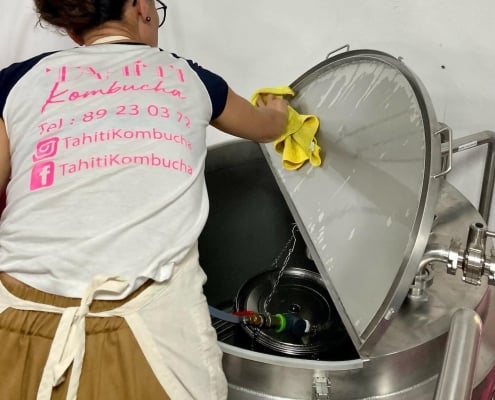
Certification
- PED, AS1210 pressure vessels
- UL/CUL/CE electrical cabinet control
- Brewing system manuals
Custom Design
- Site-size & budget-friendly custom designed equipment
- Wide range of capacity & automation levels
- All customer inquiries welcome
Product Testing & Manufacturing
- Surface polishing & Pressure testing
- Welding inspection
- Production management
YoLong Quality Assurance
- Highest international standard brewery equipment
- Excellent detailing & finish
- World renowned accessories and electronics
Delivery Time Assurance
- Equipment delivered & installed on time
- Regular progress updates with etailed product images
- Informative project scheduling & reports
Within YoLong Warranty
- Tank replacement
- Personal customer service
- Help whenever you need it & free training
Interested in learning more about Brewing Systems including additional details and pricing information? Please use the form below to contact us!



